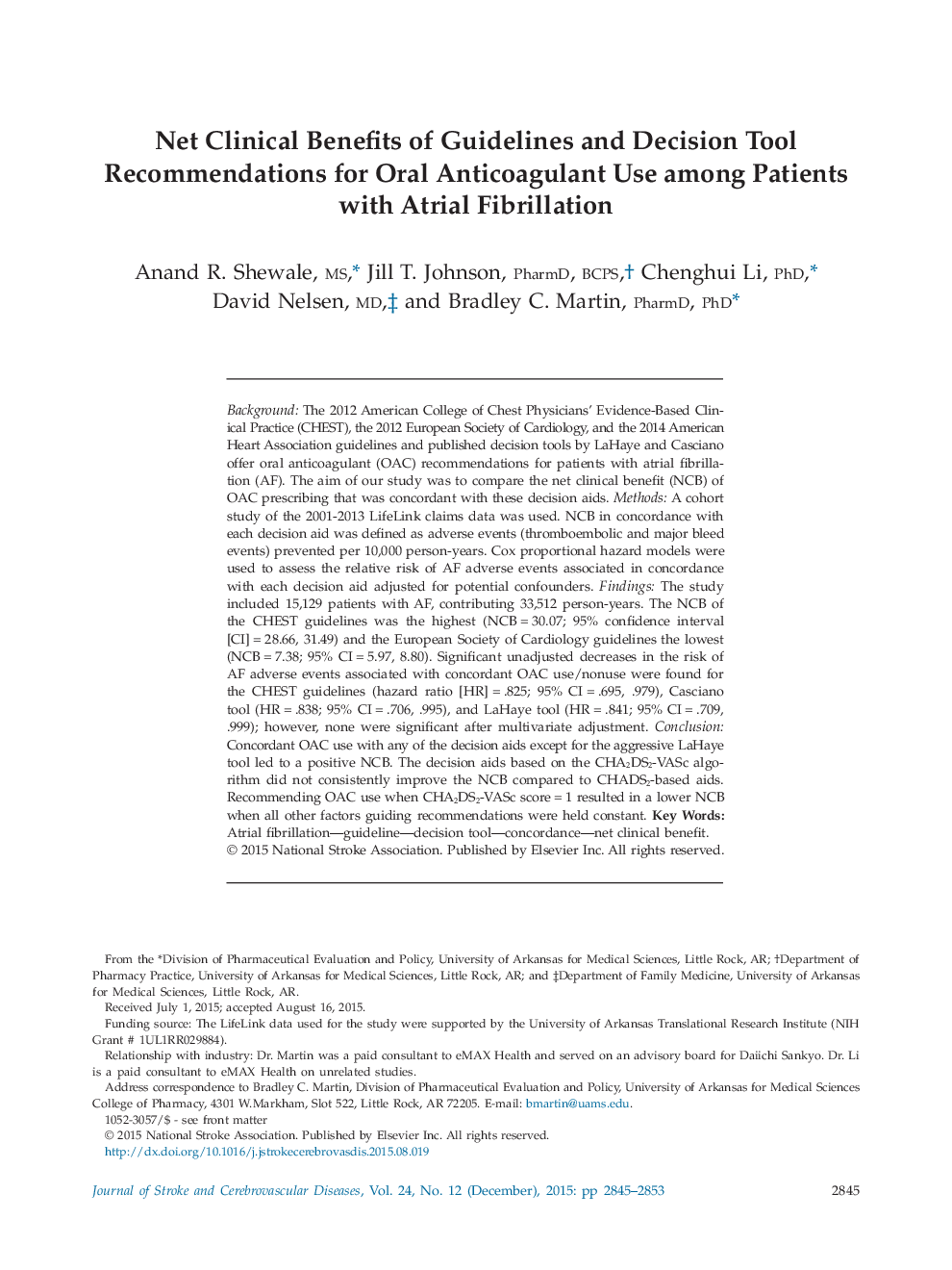| کد مقاله | کد نشریه | سال انتشار | مقاله انگلیسی | نسخه تمام متن |
|---|---|---|---|---|
| 5873702 | 1144644 | 2015 | 9 صفحه PDF | دانلود رایگان |
BackgroundThe 2012 American College of Chest Physicians' Evidence-Based Clinical Practice (CHEST), the 2012 European Society of Cardiology, and the 2014 American Heart Association guidelines and published decision tools by LaHaye and Casciano offer oral anticoagulant (OAC) recommendations for patients with atrial fibrillation (AF). The aim of our study was to compare the net clinical benefit (NCB) of OAC prescribing that was concordant with these decision aids.MethodsA cohort study of the 2001-2013 LifeLink claims data was used. NCB in concordance with each decision aid was defined as adverse events (thromboembolic and major bleed events) prevented per 10,000 person-years. Cox proportional hazard models were used to assess the relative risk of AF adverse events associated in concordance with each decision aid adjusted for potential confounders.FindingsThe study included 15,129 patients with AF, contributing 33,512 person-years. The NCB of the CHEST guidelines was the highest (NCBâ=â30.07; 95% confidence interval [CI]â=â28.66, 31.49) and the European Society of Cardiology guidelines the lowest (NCBâ=â7.38; 95% CIâ=â5.97, 8.80). Significant unadjusted decreases in the risk of AF adverse events associated with concordant OAC use/nonuse were found for the CHEST guidelines (hazard ratio [HR]â=â.825; 95% CIâ=â.695, .979), Casciano tool (HRâ=â.838; 95% CIâ=â.706, .995), and LaHaye tool (HRâ=â.841; 95% CIâ=â.709, .999); however, none were significant after multivariate adjustment.ConclusionConcordant OAC use with any of the decision aids except for the aggressive LaHaye tool led to a positive NCB. The decision aids based on the CHA2DS2-VASc algorithm did not consistently improve the NCB compared to CHADS2-based aids. Recommending OAC use when CHA2DS2-VASc scoreâ=â1 resulted in a lower NCB when all other factors guiding recommendations were held constant.
Journal: Journal of Stroke and Cerebrovascular Diseases - Volume 24, Issue 12, December 2015, Pages 2845-2853
